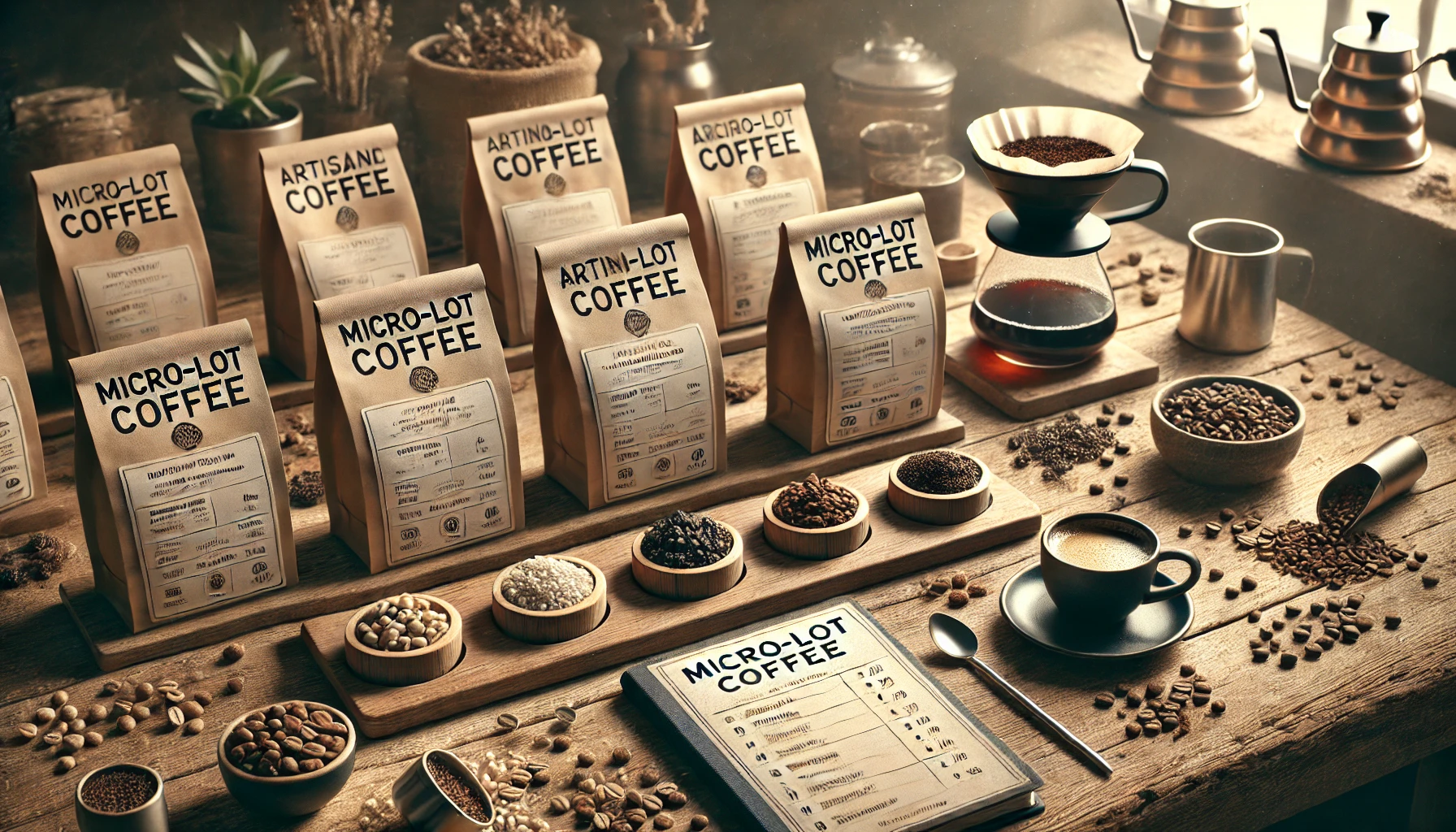In the world of specialty coffee, you may have noticed beans labeled as “micro-lot” and wondered what sets them apart—and whether they’re worth the higher price. For coffee lovers seeking unique flavors and a closer connection to origin, micro-lot coffees offer a truly exceptional experience.
In this article, we’ll explore what micro-lot coffees are, how they differ from other types of beans, and why they’re becoming a favorite among roasters and drinkers alike.
What Is a Micro-Lot Coffee?
A micro-lot coffee comes from a very small, specific area of a farm, often as small as a few rows of coffee trees or a single hill. These lots are carefully selected and separated because they show exceptional quality, unique characteristics, or experimental processing methods.
They are not defined by strict size limits but by their distinct identity and traceability.
Key features of micro-lot coffees include:
- Harvested from a single plot or varietal
- Processed separately from the rest of the farm’s harvest
- Often produced in very limited quantities
- Sold directly to specialty roasters through transparent or direct trade
Micro-Lot vs Single Origin vs Blend
It’s important to understand how micro-lots fit into the wider coffee sourcing terminology.
Single origin: Coffee from one country or region. Can still be a large or general harvest.
Micro-lot: A specific portion of a single origin—down to a specific farm, lot, or variety. Think of it like a limited edition of coffee.
Blend: A mix of beans from different regions or farms, crafted for balance or consistency. Often used for espresso or house coffee.
Micro-lots are like the single-barrel bourbons or estate wines of the coffee world: small batch, intensely curated, and highly expressive.
Why Micro-Lot Coffees Are Special
There are several reasons why micro-lot coffees are considered high-end and often more expensive.
1. Uniqueness and Flavor Complexity
Since micro-lots are grown and processed under specific conditions, they often produce exceptional flavor notes that can’t be replicated on a larger scale. You might taste:
- Tropical fruit, stone fruit, or berries
- Florals like jasmine or hibiscus
- Unique acidity, silky mouthfeel, or layered sweetness
Every micro-lot is an exploration in how terroir, varietal, and processing interact.
2. Farmer Recognition and Incentive
Farmers who produce micro-lots often:
- Experiment with new processing methods like anaerobic fermentation or honey process
- Grow rare varietals like Gesha or SL28
- Receive higher prices and recognition for their quality
This creates motivation to innovate, improve quality, and sustain long-term relationships with buyers.
3. Full Transparency
Micro-lots usually come with detailed information such as:
- Farm name and location
- Farmer or cooperative name
- Altitude and varietal
- Processing method
- Harvest year
This allows coffee drinkers to connect deeply with the story behind their cup.
How Micro-Lot Coffees Are Processed
Because they’re handled in small volumes, micro-lots can be processed with extreme care and creativity. Common methods include:
- Natural: Beans dried with fruit on, leading to fruity and sweet notes
- Washed: Clean, bright, and crisp flavor profiles
- Honey: Balanced sweetness with complexity
- Experimental/fermentation: Unique flavors like tropical fruit, wine, or spices
Processing is often done by hand or with micro-mills, and quality control is meticulous.
Are Micro-Lot Coffees Worth the Price?
That depends on what you’re looking for. If you value:
- Flavor exploration beyond chocolate and nutty notes
- Knowing where your coffee comes from
- Supporting small farms and ethical trade
- Trying limited or rare varietals
Then yes—micro-lots are absolutely worth it.
However, they’re not always practical for daily use. Their higher cost and limited availability make them best suited for:
- Weekend brews or special occasions
- Pour-over or manual brewing, where clarity shines
- Gifting to a fellow coffee enthusiast
For espresso or milk-based drinks, their subtle notes may be lost—stick to a blend or approachable single origin for those.
Where to Find Micro-Lot Coffees
Look for roasters who specialize in traceable, small-batch sourcing. Some good places to start include:
- Local specialty roasters with seasonal offerings
- Subscription services that rotate micro-lots
- Online marketplaces focused on direct trade and transparency
Always check the roast date and flavor notes—micro-lots are best enjoyed fresh and brewed with care.
Final Thoughts: Small Batch, Big Flavor
Micro-lot coffees give you the chance to experience coffee at its most precise, expressive, and intimate. They’re not just another bag of beans—they’re a deep dive into the art of farming, processing, and roasting.
If you want to expand your coffee palate, support innovation at origin, and truly taste the difference in every cup, micro-lots are worth every drop.
